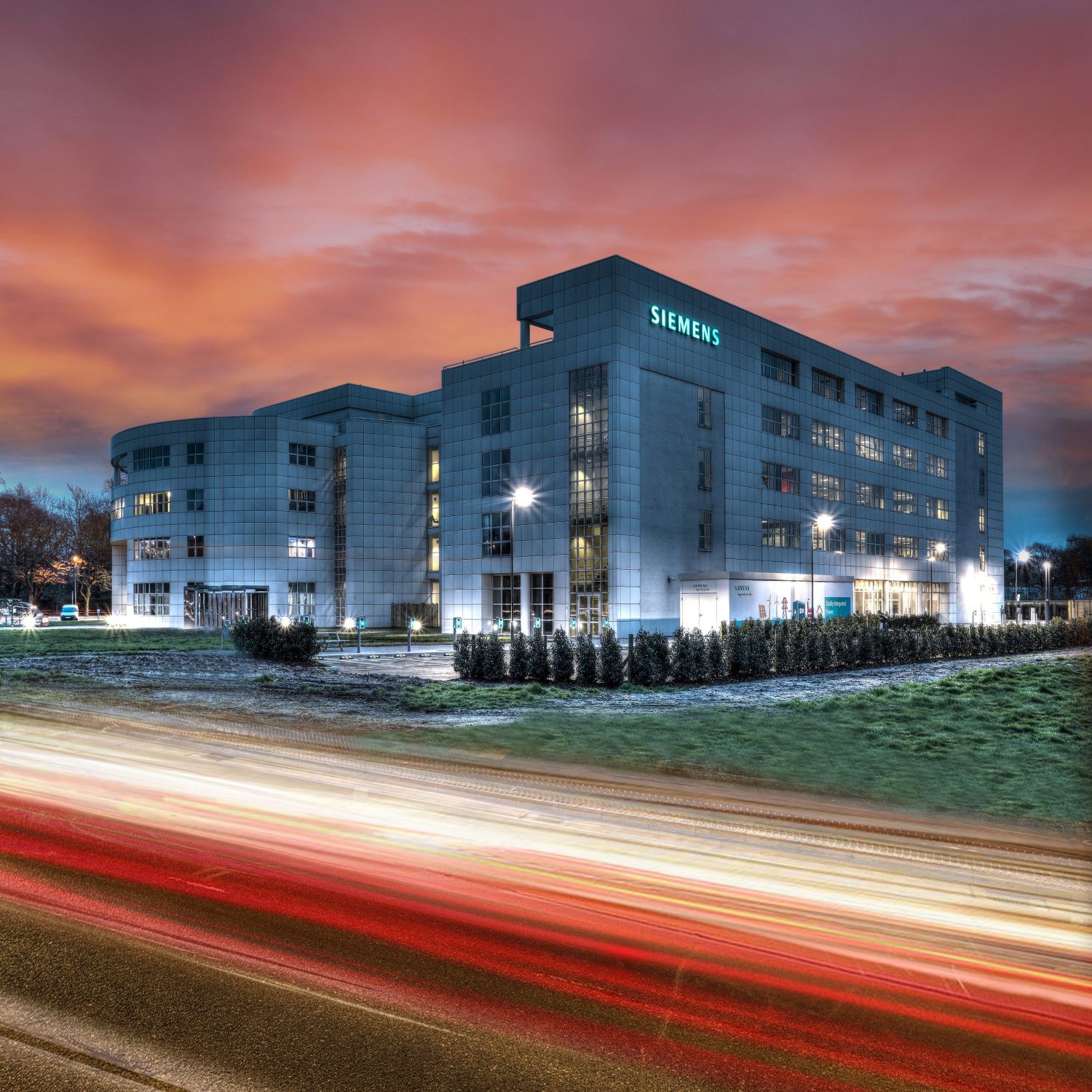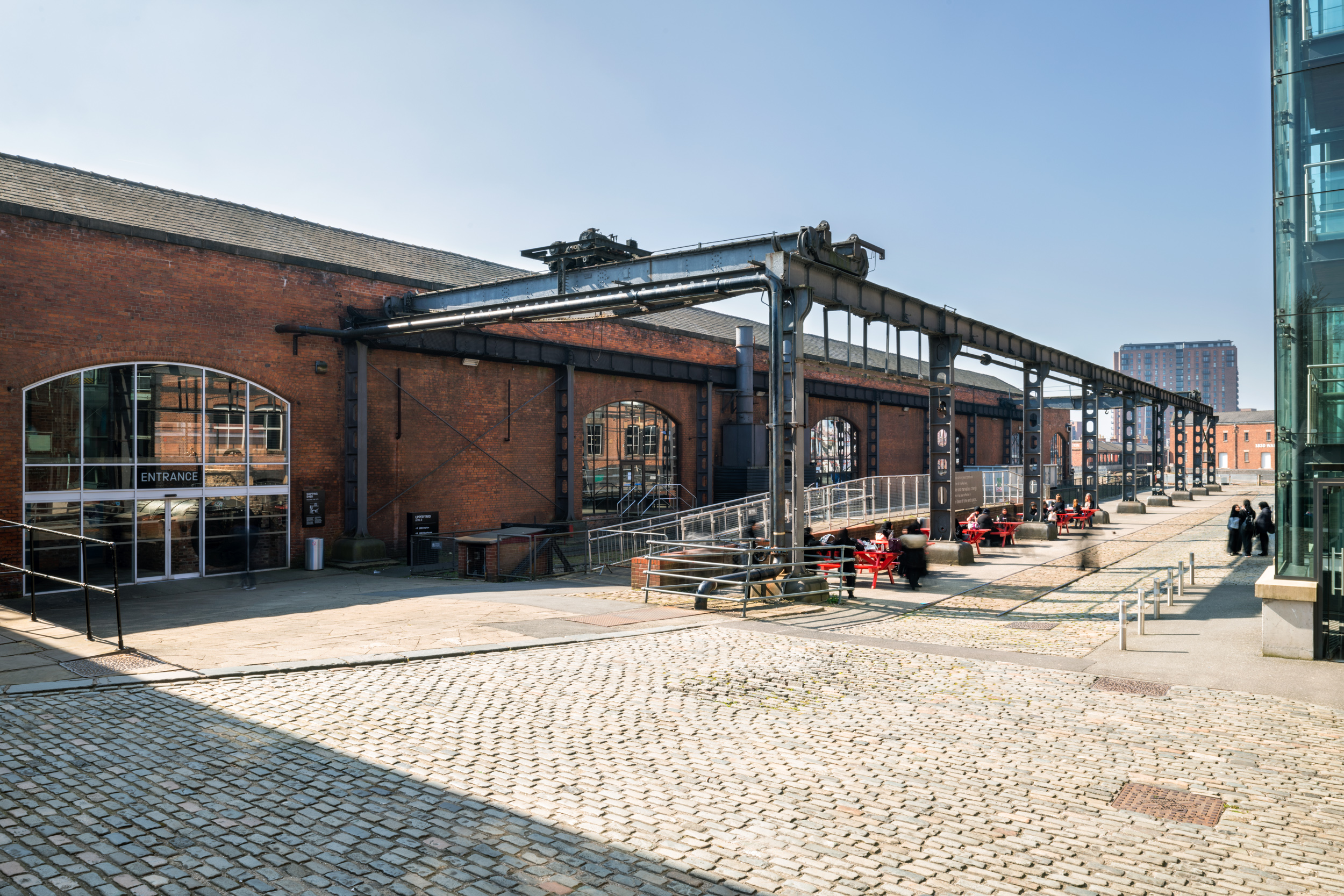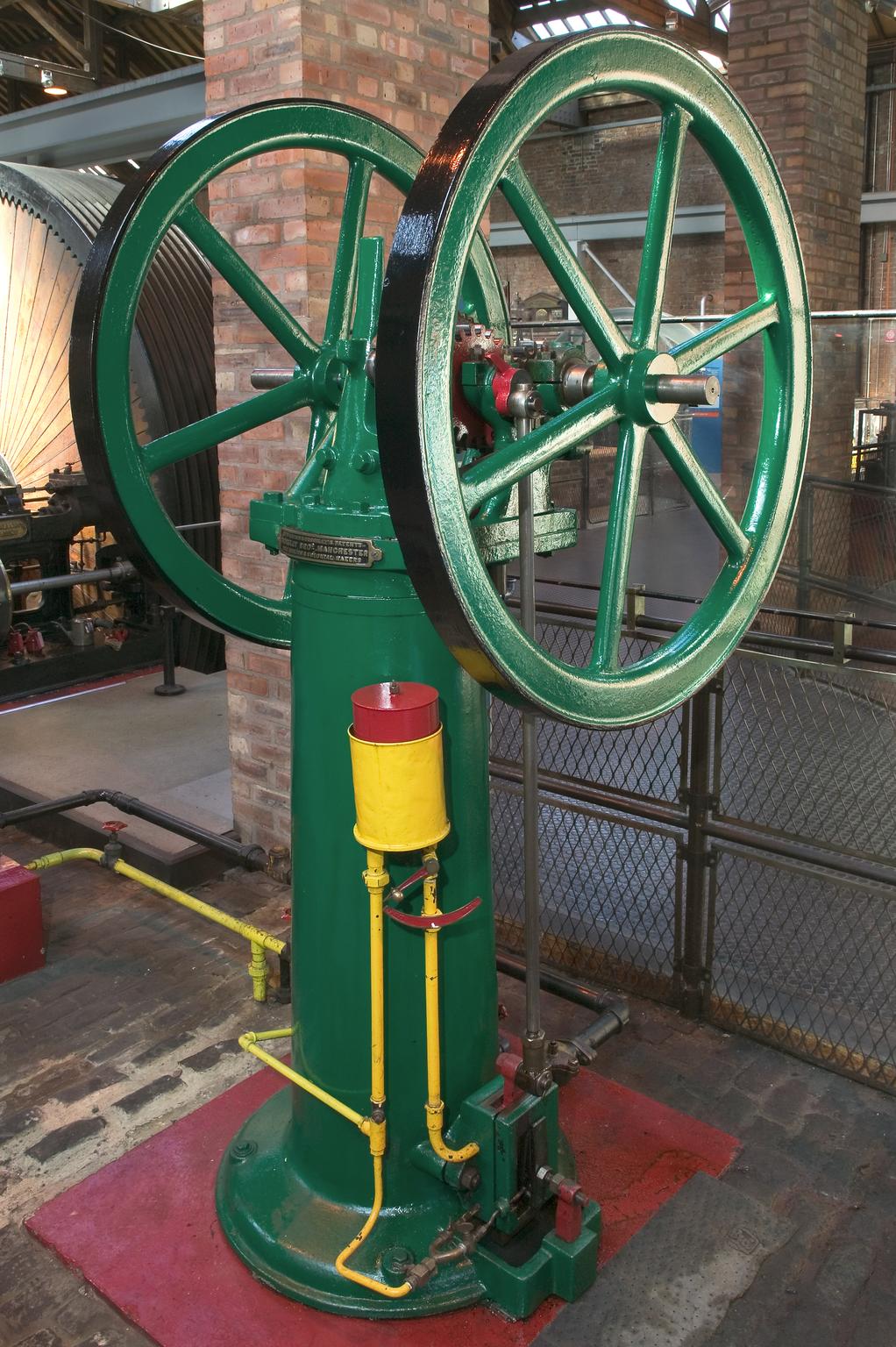Furthermore, how can that digital world help visitors understand the mechanical workings behind the engines? Or even help them become more sustainable?
This is the challenge we set three graduate scheme participants from Siemens, a company we already have a strong working partnership with and whose engineering innovations are themselves a legacy of Victorian entrepreneurship.
In a series of blog posts, the graduates will be writing about their project, how they feel about working with these historic machines and how they’re applying 21st century technology to 19th century mechanics. In this first post, Dan Burbridge introduces the team, their idea and the engine they’re working with.
First impressions
“Progressive change part-by-part”

Image credit: Siemens
Siemens is a predominantly automation-based engineering company, with its UK operations headquartered in Manchester. They have an ongoing relationship with the museum, working in partnership on events such as Platform for Investigation, which champions the joint goal of showcasing new innovations in science and technology. However, this was the first time Siemens have taken on a project so directly related to collection objects and the redevelopment of a gallery.
My role at Siemens is a graduate engineer within the Digital Industries division, which encompasses factory automation, process automation, motion control and product lifecycle management products. So, anything you’d need to automate a factory or plant. As of writing this, John Mackey and I are in the second year of the two-year grad scheme, and Marko Dogramadzi has just started his first year.
John and I visited the museum prior to the closure of the Power Hall for refurbishment work and gallery enhancement. It was a cold March day in 2019 and we were at the museum to receive a brief for how we could help with the Power Hall refurbishment project.
Prior to my experience visiting the Power Hall at the Science and Industry Museum, I was fairly ignorant when it came to engines. I thought that there were two discrete categories with little variation—engines that heat steam to spin a turbine and engines that make explosions to drive pistons—and that each was invented at some point and built upon over time.
I was surprised instead to learn my belief that engines didn’t exist one day and did the next was fallacy.
For me, looking at the grand old machines of the Power Hall you begin to see a pattern of innovation. Not great leaps in technology but progressive change part-by-part from a water-driven wheel used to mill wheat, to a large-scale diesel locomotive used to transport goods and people. Learning about the technology behind the engines, seeing them run, and listening to their sounds further emphasises this fact. There are developments and eccentricities not instantly apparent, and part-by-part innovations that change the function of the engine entirely but which you’d never spot unless explicitly shown. All with the result of progressing technology toward the present day.
The flurry of innovation that produced many of the engines in the Power Hall is known as the First Industrial Revolution, where machines and processes were mechanised for the first time. Manchester was at the forefront of this revolution. Indeed, the vast majority of the engines exhibited in the Power Hall were made in Manchester. Both John and I found the whole experience really inspiring.
The brief
“Use Siemens technology to enhance the user experience of one or more engines in the Power Hall”

The brief from the museum was pretty open: we were to use Siemens technology to enhance the user experience of one or more of the engines in the Power Hall.
The engine we chose was one that seems eccentric by modern standards, but utilises principles still used today. The Crossley atmospheric engine, built around 1874 and formally used in a bakery, looks like a large single piston engine. Explosions created by compressed gas exposed to a pilot light, fire the piston upwards and gravity brings it back down. This sounds fairly standard, but the engine has a quirk—instead of the piston driving the wheels following the explosion of gas, it instead drives the wheels on the return stroke using gravity.

Science Museum Group © The Board of Trustees of the Science Museum
This quirk is what attracted us to the engine in the first place. We were looking for something we could ‘bring to life’ using modern technology. What better than an engine most of us would have to see running to understand?
The timing of this brief turned out to be opportune. In the automation industry, we are currently going through what’s known as the Fourth Industrial Revolution: data-driven innovation.
For the first time, data from industrial installations is being used en masse to increase efficiency, streamline processes and improve plant safety. Siemens is at the forefront of this digital revolution and Manchester is the new headquarters for UK operations. To see how we could combine these two technologies spanning 145 years and four industrial revolutions, both coming out of Manchester, was a really exciting opportunity.
The proposal
“Bring the engine to life”
What we have proposed is likely to be the most delayed retrofit in history. Taking the brief into account, what we wanted to do was to show visitors in easy-to-understand terms how the engine works (which, as I said before, isn’t instantly apparent) and improve the experience for the museum staff that run and maintain it.
We decided that there are two different Siemens technologies that we can use to do this. The first, NX MCD, is part of our product lifecycle management (PLM) tool set. It is a computer-aided design (CAD) software that allows us to create a digital twin of the engine with realistic rendering and dynamic physics. The twin will operate in the same way as the original engine. It can be animated to show the engine running even when the actual engine isn’t; and data relating to speed, horsepower, etc. can be displayed virtually as the twin is running. Components can be interacted with and removed to show the inner workings of the engine meaning the entire machinery can basically be pulled apart and put back together… virtually, of course!
The second, Edge Computing and AmeSim LiveTwin, is a combination of our PLM and factory automation technology. We can accurately model the physical characteristics of the engine using AmeSim, and ‘run’ it during the operation of the actual engine. With minimal feedback from the physical engine, we can find out certain key performance indicators (KPIs). This allows us to virtually monitor the performance of the engine, improve efficiency, predict maintenance and train operators. It might even help to predict if or when the engine is going to break down.
In short, what we want to do is support the museum’s engineers keeping the engines maintained and bring the engine to life when it’s not running all through an incredibly accurate digital twin.
Most importantly for me though, is that by allowing visitors to ‘look inside’ the engine, they can see in full the ‘part-by-part’’innovation story that first inspired me when I visited the museum. I really hope that bringing this engine into the 21st century, through the technology that Siemens is developing, will help people understand the amazing engineering involved and how the work that I do now is an extension of that First Industrial Revolution that started here in Manchester 250 years ago.
I work for the National Museums Scotland and my team and I are responsible for keeping all the working objects running and maintained in the galleries, and the challenges this brings. I will be interested in the final outcome of the work, I will keep an eye out for the next blogs.
Your description of how the engine works is pretty poor. This sentence is only partly true, “This sounds fairly standard, but the engine has a quirk—instead of the piston driving the wheels following the explosion of gas, it instead drives the wheels on the return stroke using gravity.”
Gravity only plays a very small part in powering the engine. The majority of the power comes from the atmospheric air pressure pushing down on the piston.
After combustion the piston is thrown up so far that it produces a partial vacuum under the piston so that the greater air pressure above the piston actually does the work in driving the engine. The average net air pressure on the piston during the working stroke is about 7 PSI.
On a positive side, thank you for maintaining and running the engine. Engines and machinery need to run so the public will stay interested.